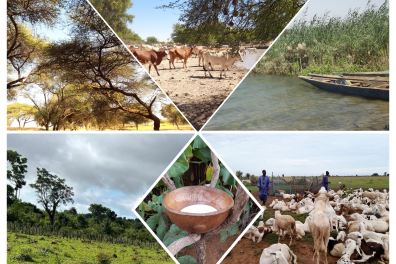Discover the language
Under the double appellation of pulaar or fulfulfulde, the Peul language, which belongs to the West-Atlantic branch of J. H. Greenberg's classification - congo-Kordofanian family, Niger-Congo subfamily - is found in some twenty West and Central African states, from the shores of Senegal to those of the Nile. Greenberg - Congo-Kordofanian family, Niger-Congo subfamily - is found in some twenty states in West and Central Africa, from the banks of the Senegal to those of the Nile, across the Sudano-Sahelian zone conducive to cattle breeding, of which the Fulani (or Fulb'e ) have a virtual monopoly in this part of the continent.
The spread of Fulani over such a vast area makes any overall statistics on the number of its speakers tedious. The figures we find, which are probably based on pre-war estimates, vary considerably from one author to another. Today, it is estimated to number over 20 million individuals.
The second consequence of this expansion is the great diversity of sociological contexts that characterize Fulani. In contact with Wolof, Soninke, Malinke, Bambara, Tuareg, Môré, Songhay, Haoussa and Kanouri, to name but a few, it is also in contact with Arabic, either directly, as is the case in Mauritania, Chad and Sudan, or indirectly through Islam. This religion had in fact served as the ideological foundation for most of the political formations built under the aegis of the Fulani (the Fulani Empire of Maasina, the states of Fuuta-Jallon and the Empire of Sokoto), or under the aegis of the Haal-pulaar'en, among whom the Fulani in reality represent only the social category specializing in animal husbandry, the very category which, through centuries of migration, spread the Fulani language and culture.
The many languages that make up Fulani are usually grouped into five main geographical clusters: the Fuuta-Tooro tongues in the lower Senegal River basin; the Fuuta-Jallon tongues on the high plateaus of Guinea and its periphery; the Maasina tongues around the inland Niger delta ; the central speakers from southeastern Mali to the Dallol region of Niger; and finally the eastern speakers in the former Sokoto Empire and the regions bordering it (eastern Niger, Nigeria, Cameroon, Chad and the Central African Republic).
This dialectal diversity is matched by a great literary wealth, with a wide variety of genres of oral literature coexisting with religious or secular texts written in Arabic characters (ajami ) and whose oldest known manuscripts date back to the 18th century, not forgetting an emerging modern literature of great productivity, particularly in Senegal, Mauritania, Guinea and Mali.
